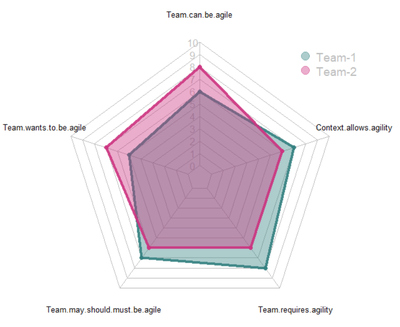Agile Development
Increasingly more development contexts are characterized by increasing volatility, uncertainty, complexity and ambiguity (VUCA). The reasons for this include globalized markets and ever shorter technology and product lifecycles. As a result, there are foreseeable and unforeseeable changes with corresponding opportunities and risks in the development context.
Relevance
In order to counteract this dynamic, more and more companies rely on agile product development. Through transparency, flexibility and speed of reaction, the associated mindset as well as methods and practices enable the agile project team to cope with changes appropriately and ideally use them as an advantage in their own right. To this end, agile development proceeds at a high-frequency iterative and incremental level. According to Scrum as one of the most well-known agile methods, the project team will implement (physical) prototypes in iterations of 2 to 4 weeks. Regular customer feedback, the realization of customer value and technical excellence are central components of agile development to ensure the competitiveness of the company under VUCA conditions.
Problem definition and focus
While the agile approach originates from the software industry and has already established itself as one of the standard procedures, the agile development of physical products (e. g. mechatronic or cyberphysical systems) is still in its infancy. The limitations of physicality are particularly challenging, which manifest themselves, for example, in the time-consuming and costly production of prototypes.
In this context, we focus on the following research priorities:
- Effort for the regular construction of physical prototypes
- Making the development organisation more flexible
- Separation of development activities into iterations
Our Offers for Companies
If you are interested, please contact us at agile@unibw.de.
Measuring agility: How agile is your team in hardware development?
 The maturity model according to Schmidt, Paetzold (2017) distinguishes 5 dimensions (see illustration):
The maturity model according to Schmidt, Paetzold (2017) distinguishes 5 dimensions (see illustration):The team can be agile: To what degree does the team have the necessary skills to be agile?
The team wants to be agile: To what degree does the team want to work agile?
The team should/must/may be agile: To what degree should, must or may the team be agile?
The team requires agility: To what degree are agile working methods required? (Or are alternative approaches such as Lean Development more appropriate for the given context?)
The context allows agility: To what degree does the product context permit agile development?
Simplified Example
Your Benefits
Student project work in your company
In addition to bachelor's and master's theses, our students also write seminar papers and project work theses. Many are interested in a practice-oriented topic in companies.
Your Benefits
- Low Costs: Almost all of our students are soldiers, who are not allowed to accept any additional remuneration in addition to their salary due to the Soldiers Act. Unlike civilian students, there are no personnel costs.
- Knowledge Transfer: Through the student work and academic supervision you receive new impulses from research.
- Scientific Approach: The examination regulations make high demands on the academic quality of student research projects. As a company, you benefit from valid results that are scientifically and methodologically derived under the supervision of an experienced member of the institute's staff.
- Good Feeling to Support Science: Science is always looking for industry experience and new use cases to try out new approaches and develop them further on the basis of practical feedback.
Trainings and workshops
We offer training courses and workshops for industrial users. These can be e. g. online webinars, method workshops of a development team on Scrum, Kanban, Design Thinking & Co. or lectures on new scientific findings. We will gladly adapt to your requirements.
Your Benefits
- Latest Scientific Findings: Our research activities keep us up to date. On the one hand, we generate new knowledge and ideas ourselves. On the other hand, we attend conferences in intensive discourse with other research institutes.
- Neutral Perspektive: In contrast to management consultancies, for example, science does not pursue the goal of maximising profits. As a research institute, it is not our job to provide the answers you want to hear.